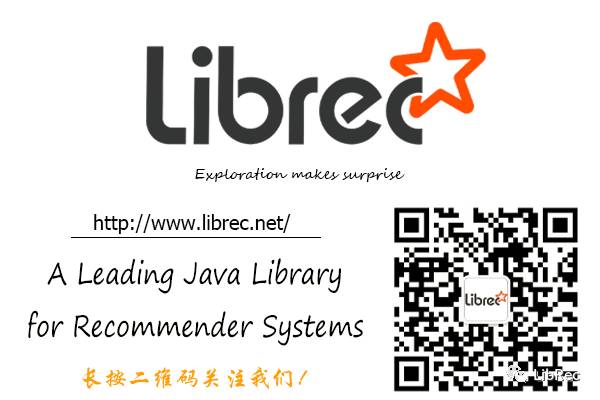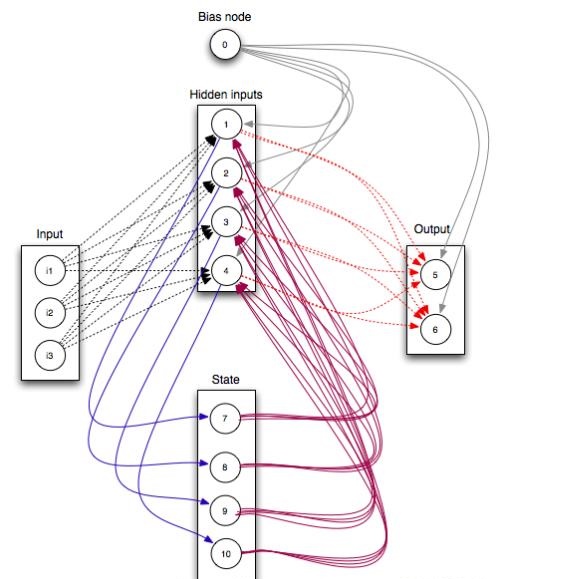LibRec 精选:推荐系统基准算法的评估问题
LibRec 精选
>> 生活不可能像你想象得那么好,但也不会像你想象得那么糟。我觉得人的脆弱和坚强都超乎自己的想象。有时,我可能脆弱得一句话就泪流满面,有时,也发现自己咬着牙走了很长的路。 --- 莫泊桑
【论文及源码】CVPR 2019 微软换脸(头发)代码(Face Swapping/deepfake):
+ 论文: http://openaccess.thecvf.com/content_CVPR_2019/papers/Gu_Mask-Guided_Portrait_Editing_With_Conditional_GANs_CVPR_2019_paper.pdf
+ 代码:https://github.com/cientgu/Mask_Guided_Portrait_Editing
【博客】 Research Guide for image quality assessment ,链接:https://heartbeat.fritz.ai/research-guide-image-quality-assessment-c4fdf247bf89
【观点】 On the difficulty of Evaluating Baselines: A study on Recommender Systems, by Steffen Rendle, Li Zhang, Yehuda Koren. 作者发现:(1)许多基准的推荐算法,在大规模使用的数据集MovieLens 10M上(报告)的实验结果并不是最优的;(2)现有的算法需要在统一的测试平台上进行比较,尤其是基准方法需要细致的调优且标准化。论文:https://arxiv.org/pdf/1905.01395.pdf
近期热点论文
1. Diversity in Fashion Recommendation using Semantic Parsing
Sagar Verma, Sukhad Anand, Chetan Arora, Atul Rai
https://arxiv.org/abs/1910.08292
Developing recommendation system for fashion images is challenging due to the inherent ambiguity associated with what criterion a user is looking at. Suggesting multiple images where each output image is similar to the query image on the basis of a different feature or part is one way to mitigate the problem. Existing works for fashion recommendation have used Siamese or Triplet network to learn features between a similar pair and a similar-dissimilar triplet respectively. In this paper, we propose to recommend images by explicitly learning and exploiting part based similarity. We propose a novel approach of learning discriminative features from weakly-supervised data by using visual attention over the parts and a texture encoding network. We show that the learned features surpass the state-of-the-art in retrieval task on DeepFashion dataset.
2. JSCN: Joint Spectral Convolutional Network for Cross Domain Recommendation
Zhiwei Liu, Lei Zheng, Jiawei Zhang, Jiayu Han, Philip S. Yu
https://arxiv.org/abs/1910.08219
Cross-domain recommendation can alleviate the data sparsity problem in recommender systems. To transfer the knowledge from one domain to another, one can either utilize the neighborhood information or learn a direct mapping function. In this paper, we propose a \textbf{J}oint \textbf{S}pectral \textbf{C}onvolutional \textbf{N}etwork (JSCN) for cross-domain recommendation. JSCN will simultaneously operate multi-layer spectral convolutions on different graphs, and jointly learn a domain-invariant user representation with a domain adaptive user mapping module. As a result, the high-order comprehensive connectivity information can be extracted by the spectral convolutions and the information can be transferred across domains with the domain-invariant user mapping. The domain adaptive user mapping module can help the incompatible domains to transfer the knowledge across each other. Extensive experiments on 24 Amazon rating datasets show the effectiveness of JSCN in the cross-domain recommendation, with 9.2% improvement on recall and 36.4% improvement on MAP compared with state-of-the-art methods.
3. Collaborative Filtering with Label Consistent Restricted Boltzmann Machine
Sagar Verma, Prince Patel, Angshul Majumdar
https://arxiv.org/abs/1910.07724
The possibility of employing restricted Boltzmann machine (RBM) for collaborative filtering has been known for about a decade. However, there has been hardly any work on this topic since 2007. This work revisits the application of RBM in recommender systems. RBM based collaborative filtering only used the rating information; this is an unsupervised architecture. This work adds supervision by exploiting user demographic information and item metadata. A network is learned from the representation layer to the labels (metadata). The proposed label consistent RBM formulation improves significantly on the existing RBM based approach and yield results at par with the state-of-the-art latent factor based models.
4. Efficiently Embedding Dynamic Knowledge Graphs
Tianxing Wu, Arijit Khan, Huan Gao, Cheng Li
https://arxiv.org/abs/1910.06708
Knowledge graph (KG) embedding encodes the entities and relations from a KG into low-dimensional vector spaces to support various applications such as KG completion, question answering, and recommender systems. In this paper, to tackle the aforementioned problem, we propose a new context-aware Dynamic Knowledge Graph Embedding (DKGE) method which supports the embedding learning in an online fashion. DKGE introduces two different representations (i.e., knowledge embedding and contextual element embedding) for each entity and each relation, in the joint modeling of entities and relations as well as their contexts, by employing two attentive graph convolutional networks, a gate strategy, and translation operations. This effectively helps limit the impacts of a KG update in certain regions, not in the entire graph, so that DKGE can rapidly acquire the updated KG embedding by a proposed online learning algorithm. Furthermore, DKGE can also learn KG embedding from scratch. Experiments on the tasks of link prediction and question answering in a dynamic environment demonstrate the effectiveness and efficiency of DKGE.
5. An Intelligent Data Analysis for Hotel Recommendation Systems using Machine Learning
Bushra Ramzan, Imran Sarwar Bajwa, Noreen Jamil, Farhaan Mirza
https://arxiv.org/abs/1910.06669
This paper presents an intelligent approach to handle heterogeneous and large-sized data using machine learning to generate true recommendations for the future customers. The Collaborative Filtering (CF) approach is one of the most popular techniques of the RS to generate recommendations. We have proposed a novel CF recommendation approach in which opinion based sentiment analysis is used to achieve hotel feature matrix by polarity identification. Our approach combines lexical analysis, syntax analysis and semantic analysis to understand sentiment towards hotel features and the profiling of guest type (solo, family, couple etc). The proposed system recommends hotels based on the hotel features and guest type as additional information for personalized recommendation. The developed system not only has the ability to handle heterogeneous data using big data Hadoop platform but it also recommend hotel class based on guest type using fuzzy rules. Different experiments are performed over the real world dataset obtained from two hotel websites.
6. Learning Disentangled Representations for Recommendation
Jianxin Ma, Chang Zhou, Peng Cui, Hongxia Yang, Wenwu Zhu
https://arxiv.org/abs/1910.14238
User behavior data in recommender systems are driven by the complex interactions of many latent factors behind the users' decision making processes. The factors are highly entangled, and may range from high-level ones that govern user intentions, to low-level ones that characterize a user's preference when executing an intention. In this paper, we present the MACRo-mIcro Disentangled Variational Auto-Encoder (MacridVAE) for learning disentangled representations from user behavior. Our approach achieves macro disentanglement by inferring the high-level concepts associated with user intentions (e.g., to buy a shirt or a cellphone), while capturing the preference of a user regarding the different concepts separately. A micro-disentanglement regularizer, stemming from an information-theoretic interpretation of VAEs, then forces each dimension of the representations to independently reflect an isolated low-level factor (e.g., the size or the color of a shirt). Empirical results show that our approach can achieve substantial improvement over the state-of-the-art baselines.
7. Graph Neural News Recommendation with Long-term and Short-term Interest Modeling
Linmei Hu, Chen Li, Chuan Shi, Cheng Yang, Chao Shao
https://arxiv.org/abs/1910.14025
With the information explosion of news articles, personalized news recommendation has become important for users to quickly find news that they are interested in. Although these methods have achieved good performances, they still suffer from data sparse problem, since most of them fail to extensively exploit high-order structure information (similar users tend to read similar news articles) in news recommendation systems. In this paper, we propose to build a heterogeneous graph to explicitly model the interactions among users, news and latent topics. Then we take advantage of graph neural networks to learn user and news representations that encode high-order structure information by propagating embeddings over the graph. The learned user embeddings with complete historic user clicks capture the users' long-term interests. We also consider a user's short-term interest using the recent reading history with an attention based LSTM model. Experimental results on real-world datasets show that our proposed model significantly outperforms state-of-the-art methods on news recommendation.
8. Balancing Multi-level Interactions for Session-based Recommendation
Yujia Zheng, Siyi Liu, Zailei Zhou
https://arxiv.org/abs/1910.13527
Predicting user actions based on anonymous sessions is a challenge to general recommendation systems because the lack of user profiles heavily limits data-driven models. In this paper, we propose a novel method, namely Intra-and Inter-session Interaction-aware Graph-enhanced Network, to take inter-session item-level interactions into account. Different from existing intra-session item-level interactions and session-level collaborative information, our introduced data represents complex item-level interactions between different sessions. For mining the new data without breaking the equilibrium of the model between different interactions, we construct an intra-session graph and an inter-session graph for the current session. The former focuses on item-level interactions within a single session and the latter models those between items among neighborhood sessions. Experiments on real-world datasets verify that our method outperforms other state-of-the-art methods.
9. Empirical Analysis of Session-Based Recommendation Algorithms
Malte Ludewig, Noemi Mauro, Sara Latifi, Dietmar Jannach
https://arxiv.org/abs/1910.12781
Recommender systems are tools that support online users by pointing them to potential items of interest in situations of information overload. Most recently, a number of deep learning based ("neural") approaches to session-based recommendations were proposed. However, previous research indicates that today's complex neural recommendation methods are not always better than comparably simple algorithms in terms of prediction accuracy. With this work, our goal is to shed light on the state-of-the-art in the area of session-based recommendation and on the progress that is made with neural approaches. For this purpose, we compare twelve algorithmic approaches, among them six recent neural methods, under identical conditions on various datasets. We find that the progress in terms of prediction accuracy that is achieved with neural methods is still limited. To support future progress and reproducibility in this area, we publicly share the session-rec evaluation framework that was used in our research.
10. A Survey on Knowledge Graph Embeddings with Literals: Which model links better Literal-ly?
Genet Asefa Gesese, Russa Biswas, Mehwish Alam, Harald Sack
https://arxiv.org/abs/1910.12507
Knowledge Graphs (KGs) are composed of structured information about a particular domain in the form of entities and relations. In addition to the structured information KGs help in facilitating interconnectivity and interoperability between different resources represented in the Linked Data Cloud. KGs have been used in a variety of applications such as entity linking, question answering, recommender systems, etc. This paper conducts a survey of KG embedding models which not only consider the structured information contained in the form of entities and relations in a KG but also the unstructured information represented as literals such as text, numerical values, images, etc. Along with a theoretical analysis and comparison of the methods proposed so far for generating KG embeddings with literals, an empirical evaluation of the different methods under identical settings has been performed for the general task of link prediction.







